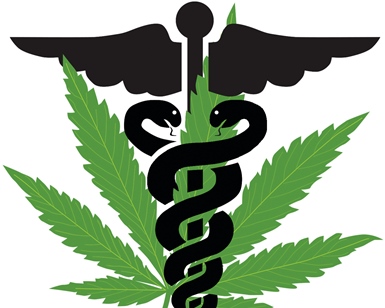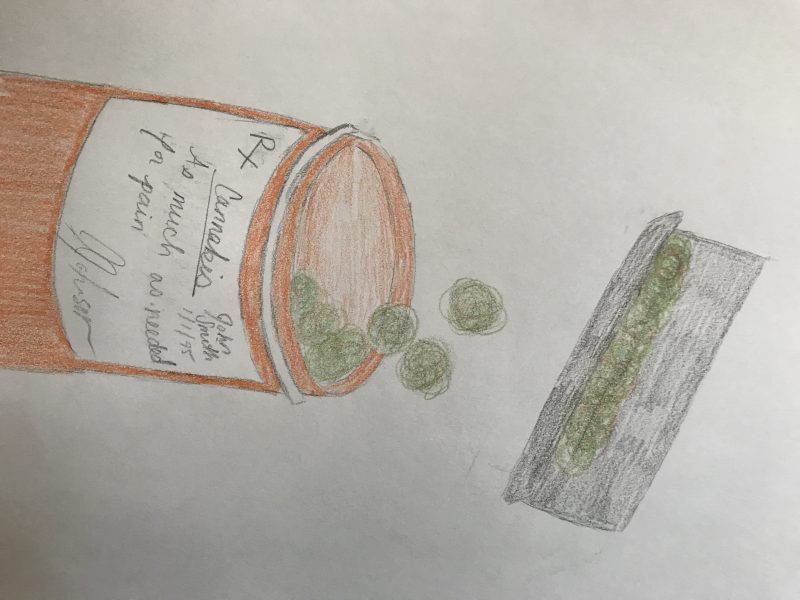One would bet that every single person knows someone in their life that could potentially benefit from a pure medicinal marijuana or even the cannabidiols. Know anyone with cancer? Multiple sclerosis? Epilepsy? Pain? Could this illegal drug help our community? Should it?
Cannabis, marijuana, pot, etc is not something one would expect as a medically prescribed treatment plan, especially considering its prevalent recreational use. However, in the last 10 years endocannabinoids have slowly moved into the medical field. In the US its legalization for medicinal purposes has been spreading. We’ve heard it all over the news as certain states legalize it while others commit to keeping it illegal regardless of potential medicinal uses. Yet, as the medicinal is slowly becoming legalized, as a whole it is still illegal and categorized as a schedule 1 drug. Out of the five schedules it is in the highest along with heroin, LSD, ecstasy, methaqualone, and peyote. This means it is very difficult to legally obtain samples for research, and therefore it is not entirely understood. There is irony of this scheduling as it pertains to research, due to it being very ‘easy’ to get on the streets. From street knowledge and experience one would not have to look to hard to find it if they truly wanted. It’s in schools, found at parties, and has become a very generalized thing in the minds of the younger public, with a mindset that “everyone is doing it.”
Cannabis has been prescribed more and more as the beneficial effects of certain compounds arise. These cannabinoids have been FDA approved within pill form, as cannabidiols (CBD), but so far the marijuana plant has not been approved as medicine by the FDA. This is because there has yet to be enough of the large extensive studies and clinical trials that need to be done prior to approval.
What are cannabinoids?
Cannabinoids are a class of chemical compounds that act upon the cannabinoid receptors found within the brain that alter neurotransmitter signaling. This can now be broken into three different categories, endocannabinoids, phytocannabinoids, and synthetic cannabinoids.
Endocannabinoids are naturally produced within the bodies of animals. These endocannabinoids are retrograde signaling molecules made from phospholipid membranes found within the central nervous system (CNS). They bind to specific G-protein coupled receptors to inhibit the release of certain neurotransmitters for a specified time acting as a neuronal regulator.
Phytocannabinoids are naturally occuring compounds within the certain plants such as cannabis sativa (marijuana). The most popular and well known of these is tetrahydrocannabinol, better known as THC or the psychotropic effect drug of marijuana.
Synthetic cannabinoids are THC derivatives made in a lab. They’re commonly mislabeled as “synthetic marijuana,” “fake weed,” “natural herbs,” “herbal incense,” and “herbal smoking blends.” These mislabels come from spraying the synthetic on dried, shredded plant material without divulging the spraying. Presently they’re considered new psychoavive substances (NPS), or unregulated mind-altering substances with intent to produce similar effects to illegal drugs. These however are quite dangerous as they are more powerful than marijuana and as most are designed based on THC they bind to the same receptors but stronger. The stronger the binding the more interaction and therefore the longer the neurological effects. These are also deadly and highly addictive according to the CDC.
How can this be used medicinally or therapeutically?
Cannabis’ properties of increased appetite and food consumption has lead researchers to study the effects of the cannabinoid 1 receptor (CB1) on appetite. It has been found to have a “role in central appetite control, peripheral metabolism, and body weight regulation.”1 This has lead to Rimonabant, a weight loss drug, for those really obese. On the other side it lead to Dronabinol, a treatment for nausea and vomiting in cancer and AIDs patients that is also associated with increased appetite. These effects also allow it to be used as a treatment for anorexia and those with diseases in which people tend to ‘waste away.’
Another use of cannabis is for pain-relief. This is done by the inhibition of the neuronal transmission in pain pathways. Some of these treatments include THC, CBS, and CBD-dimethyl heptyl (DMH) which actively block neurotransmitter release. These pain-relieving effects are used for many different disorders and diseases.
On top of this it has been shown or thought to help with multiple sclerosis (MS), Parkinson’s disease (PD), Huntington’s disease, Tourette’s syndrome, Alzheimer’s disease (AD), epilepsy, amyotrophic lateral sclerosis (ALS); bipolar disorder, schizophrenia, post-traumatic stress disorder (PTSD), depression, anxiety, insomnia; asthma, cardiovascular disorders, and glaucoma.
If you would like to read more about how it works in these diseases, I recommend this paper.
